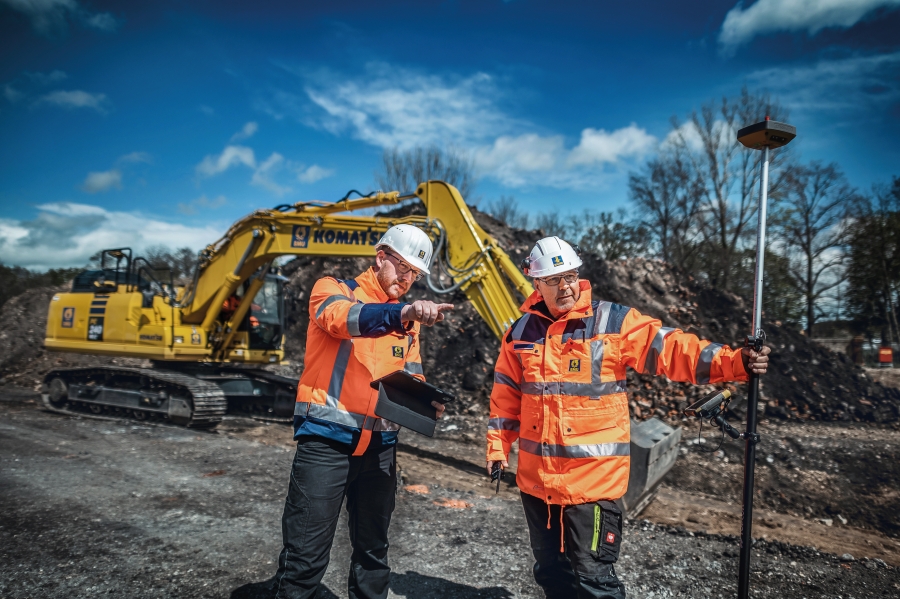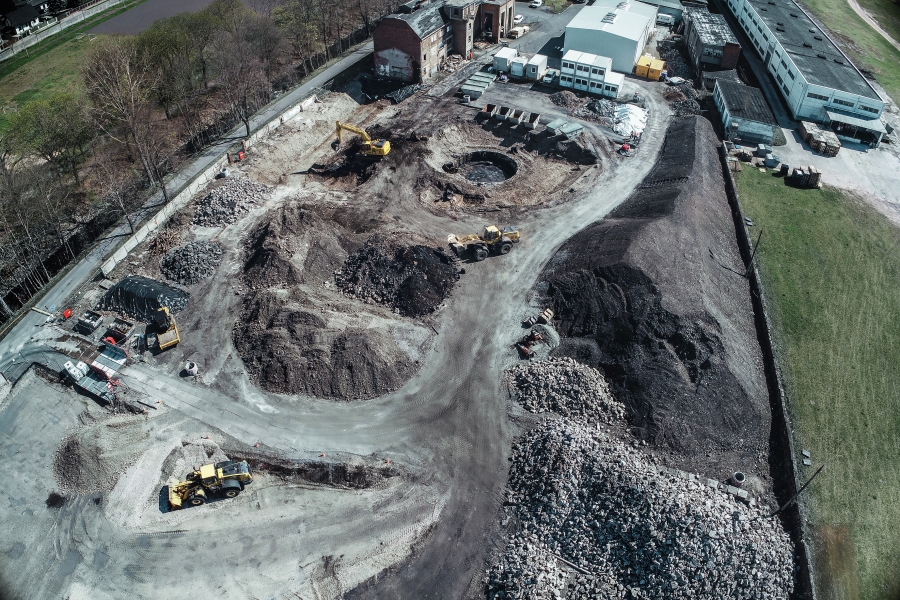
Arnstadt, Germany – The images that Friedrich Leifheit generates on his tablet using many gigabytes of data almost seem like surreal works of art. In fact, it’s not actually art, but rather a digital site model. You can distinguish the grounds of the former gas works in Arnstadt, which now contain nothing but piles of debris and the ruins of buildings. All other traces of an industrial history spanning more than 70 years have already disappeared, except for environmentally hazardous materials, such as tar, heavy metals, phenols or hydrogen sulfide compounds, still lurking deep underground. The task of the Bauer Umwelt division of BAUER Resources GmbH, in collaboration with BAUER Spezialtiefbau GmbH, is soil remediation including the construction of an excavation pit and groundwater treatment.
In January 2021, the work of digital surveying the 12,000 m² site using a drone and a rover rod began. During its surveying flight, the drone took hundreds of high-resolution images in which objects can be distinguished down to mere millimeters. The rover rod also enabled precise centimeter-accurate surveying to rapidly determine the cubic volume of debris, the excavation pit volumes and changes to the site. Using the images collected, 3D data were generated after the digital collection phase and then transferred to a digital site model. The result is true-to-scale, photorealistic representations of the entire site including all details. “The more precise and detailed data we have about a site’s condition, the more precisely the quantities can be calculated, and therefore also the expenditure required for a construction project. These little digital helpers make it possible and also save us a lot of time,” emphasizes Holger Kaiser, Manager for BIM and Digitalization at BAUER Resources GmbH.

The surveying work was followed by gradual excavation of the three excavation pits up to a depth of 3.5 m. In the process, a total of 9,100 m³ of material was removed and disposed of, including approximately 16,000 tons of polluted soil and construction debris as well as roughly 500 tons of soft tar. The encountered foundations were recorded in 3D on a tablet using surveying software, then forwarded to the BIM department at Bauer Resources to calculate volumes. After construction of the largest of the three excavation pits (approximately 4,200 m³ removed), replacement boring was carried out with a diameter of 1,800 mm up to depths of 7 m below the ground surface to remove the tar hotspot. For processing, the excavated soil was transported to the soil treatment center of the Bauer Umwelt division in Bleicherode 150 km away. The polluted dripping water from the drilling process was treated using the established groundwater treatment system. Work will be concluded with construction of the last excavation pit followed by earthworks.

To sum it up, this is for the most part a classical rehabilitation project but is still characterized by an ambitious use of digital tools. Along with drones, rover rods and tablets, the Bauer team also relied on digital tools for site documentation. Rather than using pen, paper and cameras, the team led by Friedrich Leifheit, Site Manager at the Bauer Umwelt division, recorded all relevant data, including tasks completed, personnel and equipment employed, site images and quality-related information, using a digital construction diary – a convenient web application – on the tablet. The decisive advantage: With this approach, all construction diaries for a site are automatically collected and compiled. The laborious and time-consuming task of preparing a report at the office is eliminated. “In this way, we can identify construction progress at a glance, review the work that has been performed and adopt countermeasures or adjust the schedule in case of deviations,” explains Friedrich Leifheit, adding: “In addition, the information is available for all parties involved, around the clock and from any location. This greatly facilitates and improves communication on the site.” The work executed by Bauer is expected to be completed by September 2021.













































